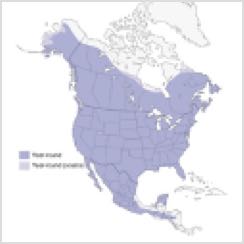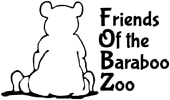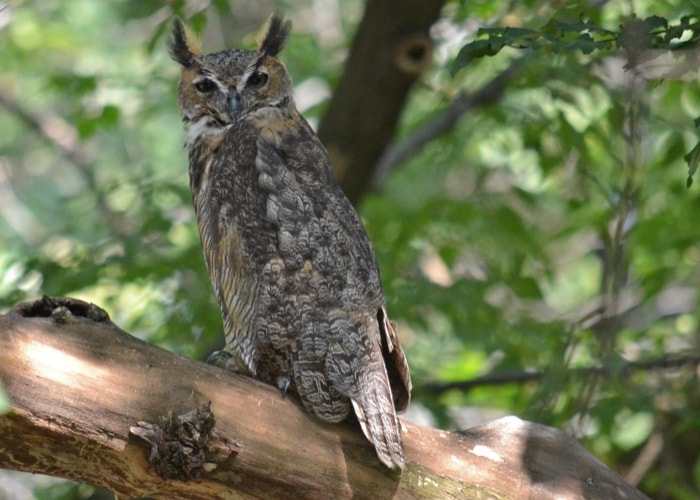Great Horned Owl
Bubo viginianus
Conservation Status: Least Concern
Characteristics:
- They have large tufts of feathers on their heads.
- They have large eyes.
- They have brown, white, gray and black markings that look like the bark of a tree. The markings help to camouflage them in the woods.
- They have a wingspan of over four feet and are about 2 feet in height.
Lifespan: The oldest known wild Great Horned Owl was 28 years old. In captivity, they can live more than 50 years.
Range and Habitat:
- They live in woodlands, along cliffs and canyons and at the edge of forests.
- They have an exceptionally large range being found in the forests of North, Central, and South America.

Diet:
- They hunt small animals like mice, rabbits, squirrels and skunks.
- They also will eat birds like duck and quail.
- They regurgitate or throw up the undigested parts like bones and fur, in owl pellets.
- You can tell what an owl has eaten by these pellets.
Behavior:
- They have exceptionally good eyesight and excellent hearing that helps them to hunt at night.
- Their loosely packed feathers make it almost silent when it flies which makes it easier to snake up on prey.
- They are solitary except during nesting and do not migrate. They maintain territories with an average home range of 1.5 square miles.
- They communicate by hooting which also establishes territory limits.
- Owls will bill-clap, hiss, scream and make guttural noises at predators. If the threat escalates, they will spread their wings and strike with their feet.
Fun Facts:
- They can swivel their heads more than 270 degrees to look in any direction.
- They are one of the heaviest owls. They are the second largest in North American but in South America they are the biggest.
- They cannot see in darkness. They rely on their hearing sense more than any other sense to hunt animals at night.
- Scientists have named about 20 subspecies of Great Horned Owls.
Keeper Notes:
Linda and Jerry hatched in 2012 as nest mates. They hatched in the wild but were raised by a wildlife rehabilitator. After determining they were too used to humans and could not fly well enough to be released back into the wild, they were permanently placed at the zoo by the Wisconsin Department of Natural Resources. The owls are fed 6-8 mice daily and occasionally fed pheasants, rabbits, and quail chicks.

